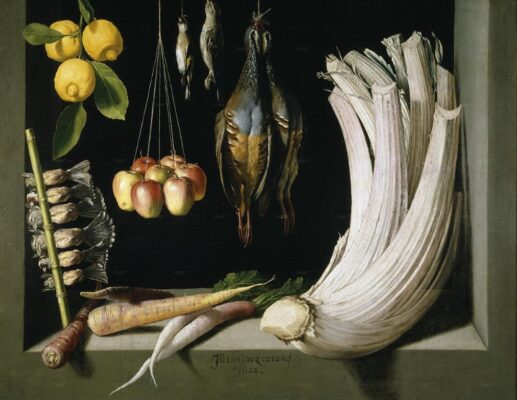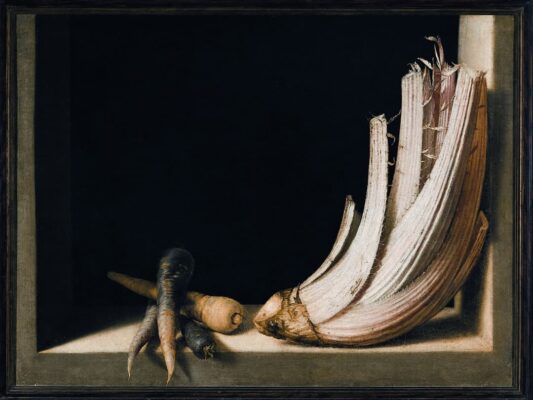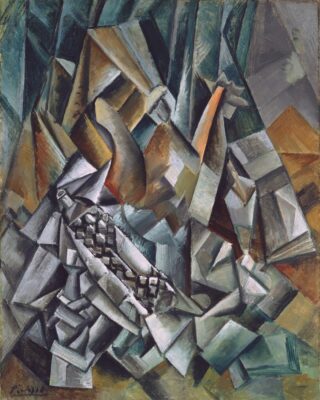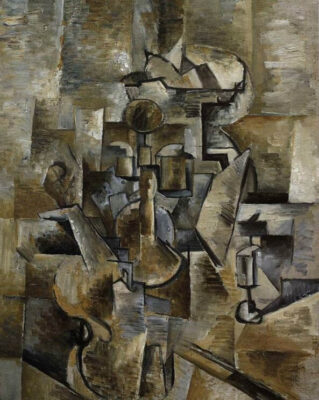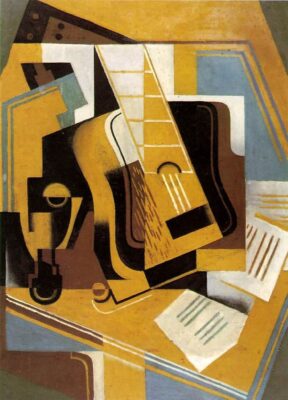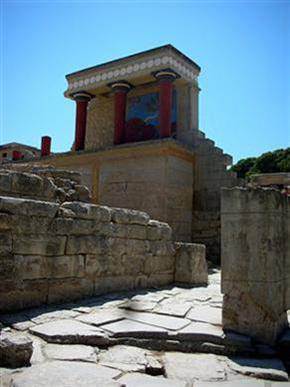10 Great Still Life Paintings
The genre of the Still Life view through 10 great paintings, from the antiquity to the contemporary age.

by G. Fernández – theartwolf.com
How we would define a still life painting? Academically, we could say that a still-life is a painting that depicts inanimate objects from daily life, represented within a space limited by the painter. But without a doubt this definition is too simple for a pictorial genre that has fascinated the greatest painters, from early baroque to the 21st century. In this brief essay we are going to make a short but intense review of the history of still-life through 10 fundamental works, from antiquity to the contemporary age.
“Transparent bowl with fruit and vases” – mural painting in Pompeii, Italy, 1 st century a.C. – It is extremely difficult to determine when the genre of still-life was born. We know that even the ancient Egyptians decorated the tombs with paintings of fruits, vegetables and other foods, aimed to feed the deceased souls in their afterlife. This example, discovered in the ancient city of Pompeii, is extraordinary for its naturalism and the gentleness with which each piece of fruit is represented, using a different pigment for each piece of the bunch of grapes that constitutes the center of the painting. It is also notable the contrast between the solid transparent bowl -glass was a very appreciated material in ancient Rome- and the sensation of instability caused by the inclined jar.
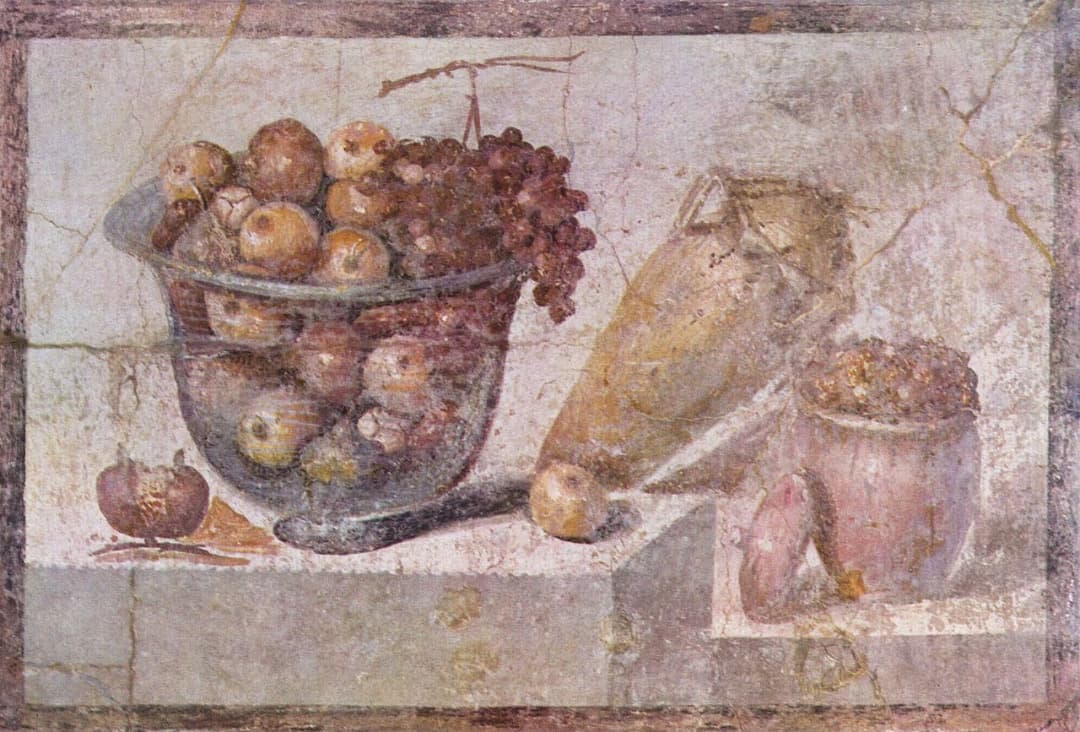
Sanchez Cotán: “Still Life with Game Fowl, Vegetables and Fruits”, 1602 (Madrid, Prado Museum) and “Still Life with thistle and carrots” (Museum of Fine Arts, Granada) – 17th century Spanish Painting has a high number of still-life painters, including figures like Luis Meléndez, Juan van der Hamen or even the great Francisco de Zurbarán. Nevertheless, none of them were as original as Carthusian painter Juan Sanchez Cotán, unique among all of them for his apparently simple, but full of force and intensity, compositions in which the emptiness, as in the painting in Granada (another similar version is now in Philadelphia), has a fundamental importance, even competing with the object of the picture.
Abraham van Beyeren (Abraham van Beijeren): “Banquet Still Life”, c.1660 (Los Angeles, County Museum of Art) – Van Beyeren was an almost unknown painter in his day, but today he is considered a key figure of the Dutch still life painting from the 17th century, which includes names like Jan Davidsz de Heem or Frans Snyders. His still life paintings -especially the banquets ones- are authentic pictorial extravaganzas, tremendously rich in all kinds of elements and details. The work illustrated here is one of his most celebrated compositions.
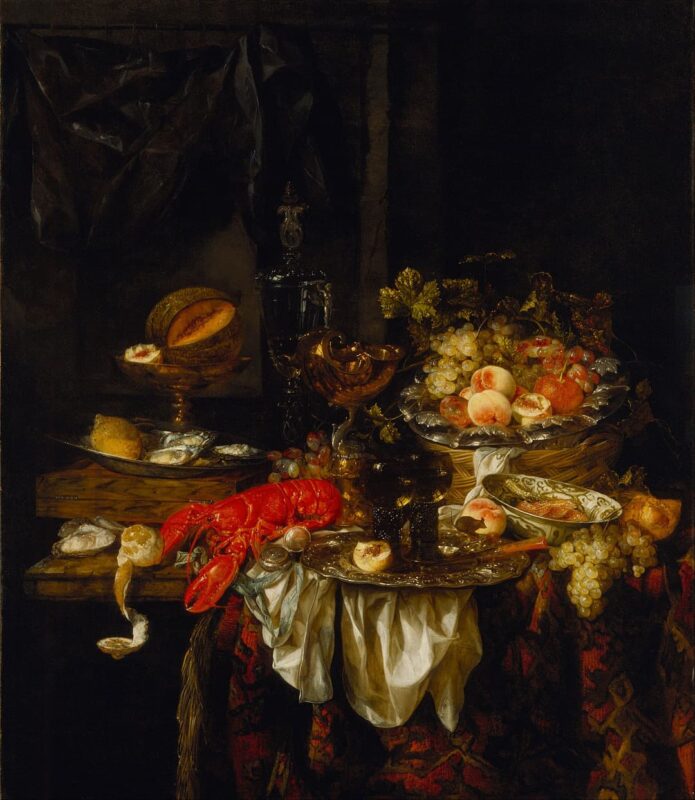
Jean Siméon Chardin: “The Ray (la raie)”, 1728 (Paris, Louvre) – Chardin is one of the masters of the still life painting of any era, and “The Ray” is one of his undisputed masterpieces. The work was widely published and admired by important figures like Diderot -who called Chardin “the great magician”-, Marcel Proust and even Henri Matisse, two centuries later. An unusual element in this still life is the inclusion of a living animal -the cat- creating a strange and veiled dynamism within the triangular composition of the painting.
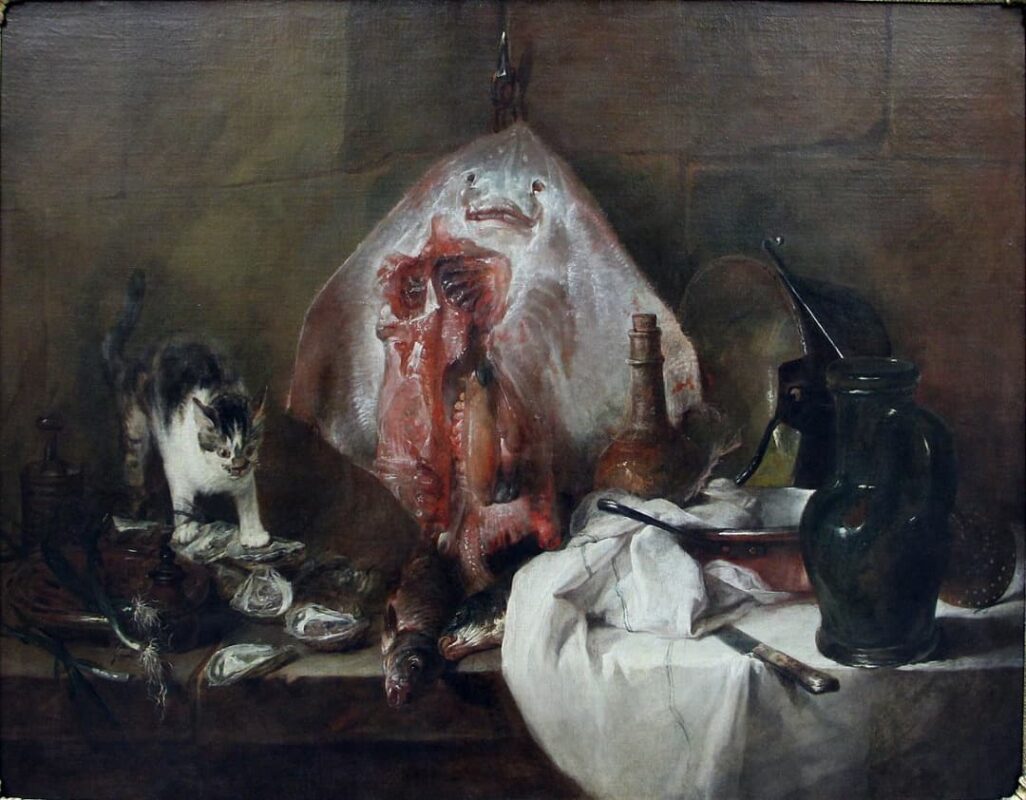
William M. Harnett: “Violin (the old violin)”, 1886 (Washington, National Gallery of Art) – Irish born American painter William Harnett was one of the pioneers of still life painting in the United States. “Violin” (a.k.a. “the old violin”) is one of the best examples of his “trompe l’oeil” style (“fool the eye” style) in which the painted elements can be mistaken for real, physical objects. In fact, when this picture was first exhibited, many visitors tried to touch the violin depicted in the canvas, believing that the instrument was a physical object placed over the picture.
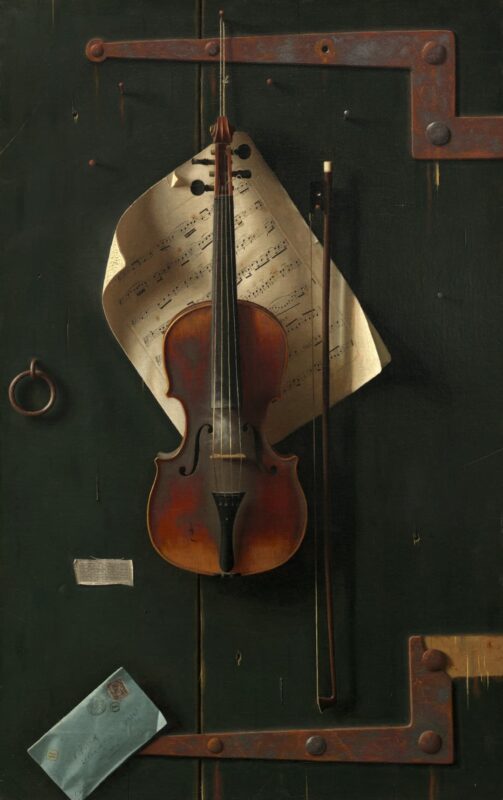
Vincent van Gogh: “Sunflowers (Vase with fifteen sunflowers)”, 1888 (London, National Gallery of Art) – Van Gogh’s “sunflowers” are not only one of the artist’s favorite subjects (he painted seven canvases of vases with sunflowers, plus three earlier works depicting the sunflowers alone), but they also rank among the most famous paitings ever created. “The sunflower is mine in a way”, said van Gogh to his brother Theo. The work illustrated here is one of the brightest of all the series, with a fabulous spectrum of yellow pigments. One of these ‘sunflowers’ by Van Gogh broke the auction record for a painting when it was sold to a Japanese investor for almost $40 million in March 1987. Recent rumors have suggested that the work could not be a genuine van Gogh, but a copy by Emile Schuffenecker.
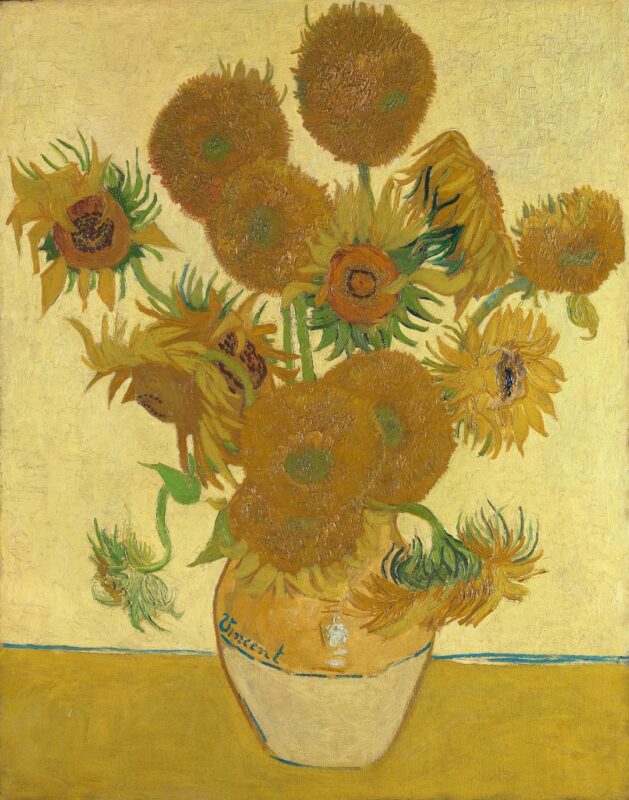
Paul Cézanne: “Still life with fruit basket (the kitchen table)”, 1880-1890 (Paris, Orsay) – Cézanne is arguably the greatest master of still life painting of any era, and this shining painting constitutes one of his most ambitious compositions. The first element we see is a wooden table partially covered with a white blanket, and nine pieces of fruit over it. Curiously, the enormous green pear of the right is not placed over this white blanket, as if its scale did not allow it to be placed along with the rest of the pieces. Two white ceramics jars, along with a larger one behind them, form a particular triangular subcomposition. This group of figures could have created an exceptional still life by themselves, but Cézanne has reserved us an extraordinary illusion: the fruit basket. Where is this basket? Placed in a very unstable position in the upper right corner of the table, or -thanks to a complex perspective- is on the ground along with the wood piece partially depicted at the right of the painting? Here Cézanne has created a double perspective to paint a sensational work in which Cubism begins to appear.
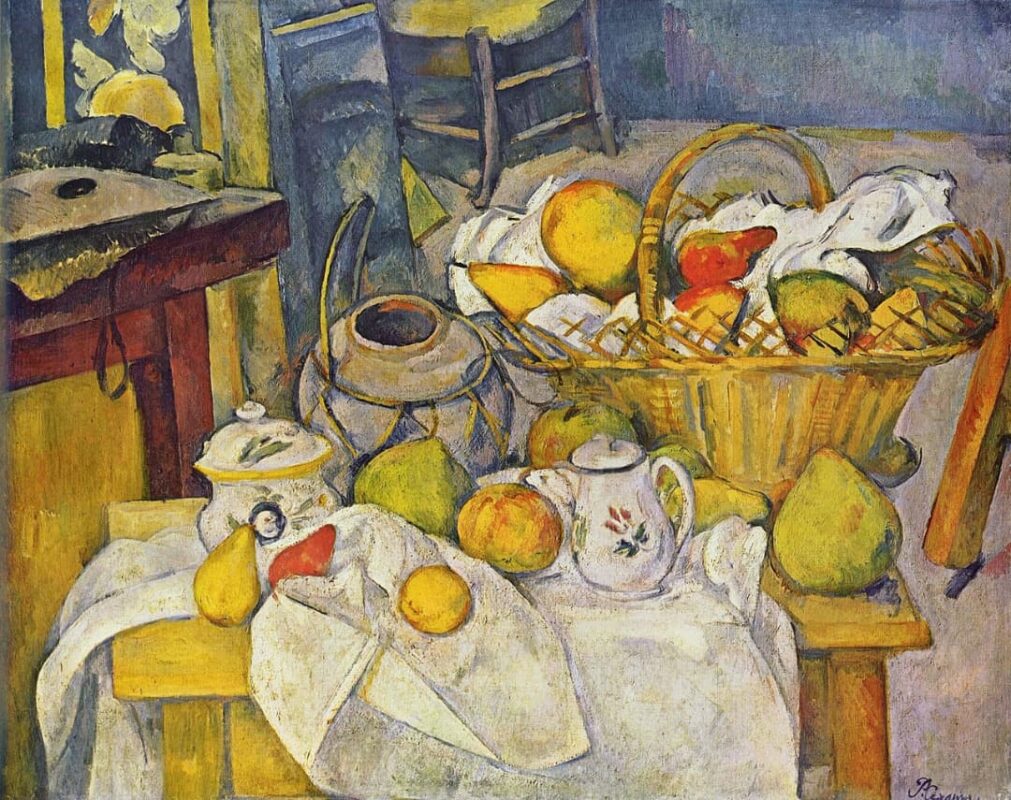
Three cubist still life paintings: Pablo Picasso: “Still Life with liqueur bottle”, 1909 (New York, MOMA), Georges Braque: “Violin and candlestick”, 1910 (San Francisco Museum of Modern Art), Juan Gris: “The guitar”, 1918 – Cézanne’s experiments, such as the previous work, were the prologue of the most influential vanguard of the 20th century: Cubism. The first two works illustrated here (by Picasso and Braque) are two excellent examples of the “analytical cubism” developed after Cézanne’s works, reducing the painted elements into simple geometric forms under different points of view. The later work by Juan Gris is representative of the painter’s personal interpretation of the “synthetic cubism” (initiated years before by Picasso), going beyond the mere collage to be focused in the relations between the different elements of the represented reality-object.
Of course, the history of the modern still life Painting is not complete without the figure of Giorgio Morandi, the Italian maestro whose paintings fascinated Federico Fellini. Nevertheless, choosing just one work among all the still life paintings completed by Morandi is simply imposible.
Tom Wesselmann: “Still Life #20”, 1962 (Albright-Knox Art Gallery). Wesselmann’s bright still life paintings are icons of the pop-Art movement. Instead of the fruits and vegetables used by baroque and impressionist painters, the still life paintings by Wesselmann depict elements taken from our daily modern life. Also, still life was a genre practiced by other pop-Art painters such as Roy Lichtenstein and Andy Warhol, although his famous “Campbell’s soup cans” must be seen not as a pure still life painting, as they lack any relationship between the objects and the surrounding space. Something similar can be said of Wayne Thiebaud’s beautiful and colorful pastels, focused on the two-dimensional representation of colors or textures.
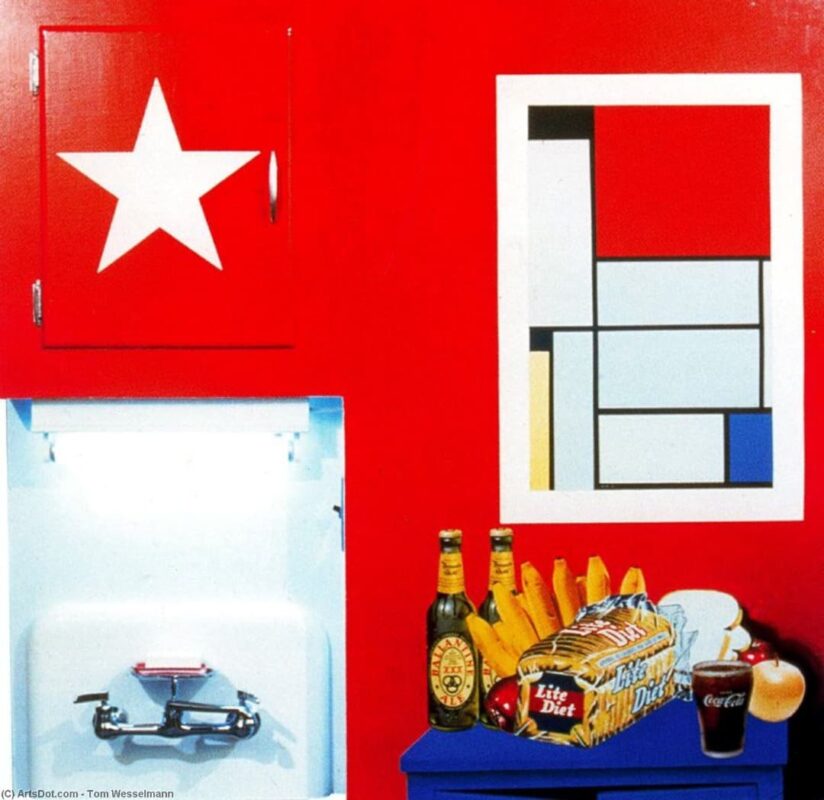
Ralph Goings: “A-1 Sauce”, 1995 (private collection) – Ralph Goings is one of the most shining and productive photorealistic painters of the last years, along with figures like Richard Estes or Ed Ruscha. While his detailed paintings of donuts, bottles, hamburgers or even parked vans are finished with a stunning realism, these apparently dead and dehumanized elements are full of an inexplicable but irresistible emotion.
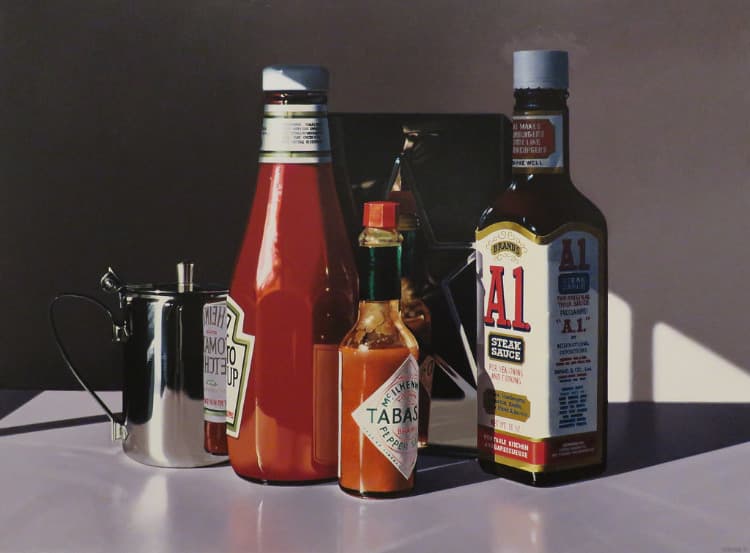
The Still Life is also an important and very interesting genre for photographs and digital artists.
Follow us on:

